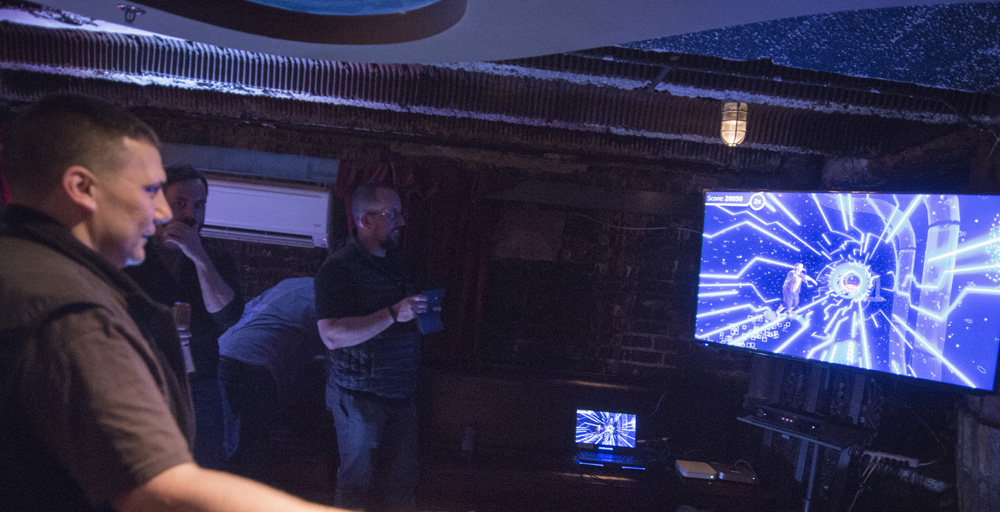A Guide to SAIC’s 2014 Graduate Open Studio Night
Graduate art studios at the School of the Art Institute of Chicago are open to the public just once each year on Graduate Open Studio Night. Faculty and staff, students, curators, collectors — even that guy who passes out flyers for a jewelry store on the street — can see what MFA students in all departments, genres and mediums at one of the top art schools in the country have devised. First-year graduate students in the MA in New Arts Journalism program profiled the work of SAIC students whose on-campus studios will be open to the public on November 7.
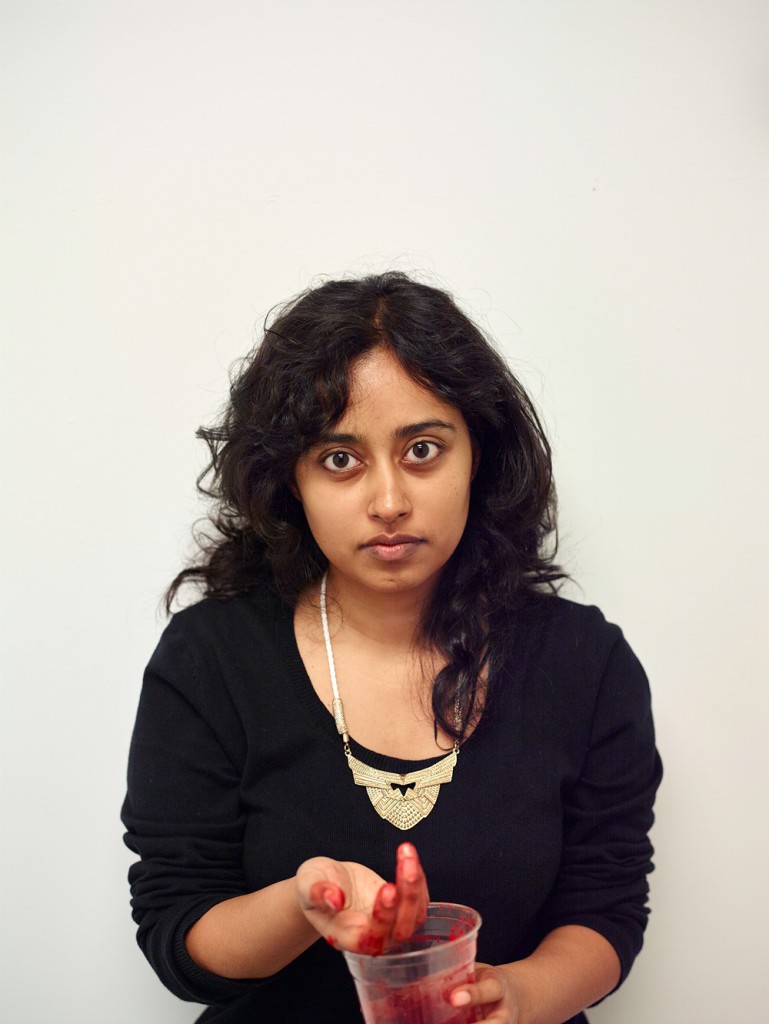
Udita Upadhyaya
(MFA Performance)
After a degree in film at Boston University and several years in the film industry, Udita Upadhyaya changed tack, pursuing her interests in performance and video art. Her early exercises took place in private, in the early hours of morning in her Bombay bedroom, where she delved into ideas concerning the individual and subsequent “invisibility as a by-product of being part of a collective.”
Upadhyaya’s current work deals with a “fear of femaleness and ownership of the female form.” Her themes are centered on shame and the tension between what is considered private and what is considered public. In her latest performance, she explores these through the public act of washing underwear juxtaposed with imagery relating to food and consumption. Still fleshing out these ideas, she hopes by performing publicly to continue to develop her work through engagement with viewers and her experience of the performance itself.
Upadhyaya is well aware that viewers may tend to link the subject matter of her work to her Indian identity, but she would like to resist these compartmentalizations. “I want my work to speak louder than my exotic experience,” she said, “I think it’s going to be a career-long struggle.” —Amie Soudien
Madeline Bohrer
(MFA Painting)
Spinning, spinning, spinning. A mechanical arrow appendage spins on a vibrant diptych by Madeline Bohrer. One might assume this is the work’s focal point, especially with that most imperative of verbs written across it: F***. But nothing competes with the spreadlegged female form plastered on the left panel and how its relation to the smoky figures embracing each other on the right. With the fervor of Matisse’s color palette and the ferocity of Picasso’s Les Demoiselles d’Avignon, Bohrer’s painting explores the duality of the implicit and explicit in childhood perceptions of romance and gritty reality.
Her work makes references to puerile games like fortune teller, spin the bottle, and “marry, f***, kill.” The overarching themes in her work, inspired by contemporary artists like Sarah Lucas, focus on the female form, its objectification in culture, how it is “looked at” throughout art history and the everyday female experience, beginning in girlhood. “It is funny, I don’t even have to think,” she says of her feminist agenda, “it just comes out in my work. It’s very natural and it has grown. It is based on my own experiences and thoughts.” She understands the nature of paint and the push and pull of medium. Describing her work, she exhibits a coy and quiet grin of self-aware, unadulterated pluck. —Jac Kuntz
Sherae Rimpsey
(MFA Writing)
Sherae Rimpsey has lived in Brooklyn, Philly, Stuttgart and Chicago and traveled many places in between. She holds a BFA in Technology and Integrated Media, with an emphasis in Visual Culture from the Cleveland Institute of Art and is working on a masters in creative writing at SAIC. Though a multidisciplinary student with a long history in the arts, her concern as Open Studios approaches is simply, “Do I need to provide grub?”
Rimpsey chose SAIC in order to focus on her writing, but that doesn’t mean she’s forgone her visual pursuits. On the contrary, her current ambition is to pair images with complementary written text. The text would not serve as an explanation of the images but a continuation of the mutating forms most present in her work. Rimpsey’s art, both written and visual, resonates strongly with themes of subtext, ambiguity, abstraction, repetition and sparseness. She is most inspired by Prince (“Prince is actually a genre,” she points out) and favors works by Francis Alys and Donald Barthelme.
This is Rimpsey’s first year at SAIC and, having previously been confined to her living room or kitchen to create, she’s thrilled with what she has been able to do in her studio. Still, when she is writing, she prefers to be in bed. Ten years from now, Rimpsey sees herself continuing along a similar path, “making, living and loving.” Of her MFA degree she adds, “those three little letters won’t hurt matters.” —Elizabeth Esche
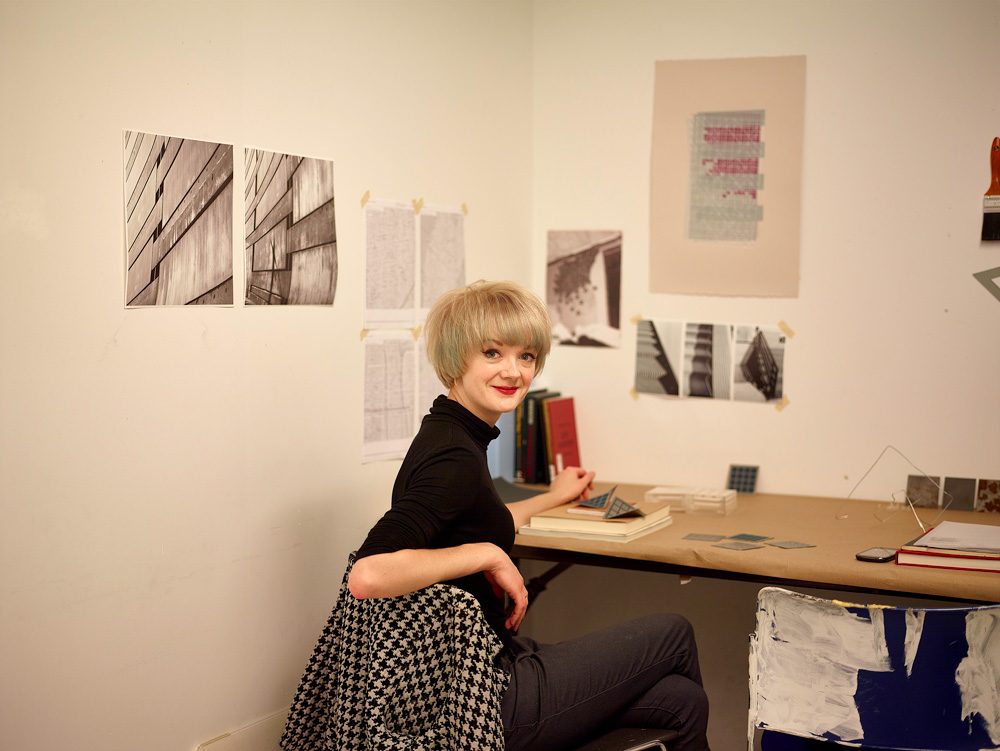
Frances Lightbound
(MFA Printmedia)
In Frances Lightbound’s studio one is confronted with work that actively attempts to re-encode the grid, not as a static modernist model for organization and rational thought, but as a philosophical model for creative productivity. Lightbound fuses print to hand-bent architectural steel. The relations mobilized by Lightbound’s succinct formal renderings exceed both the parameters of the elements utilized and their normative vocations. Print and steel are layered in a non-hierarchical mode querying the relationship between support and representation.
Organized in vague tension with one another, these objects inevitably call attention to the uniformity from which they hail, but they are distant and altered enough to remain simultaneously marked by machine and hand. Current iterations of Lightbound’s objects are the size of a palm and include representations of a grid. While one sees and considers the grid — in relation to a newly realized three-dimensional space — one thinks of the hand into which these objects might squarely fit and be held or refolded. There is an affective verve to even the most diminutive of Lightbound’s pieces. —Pablo Lopez
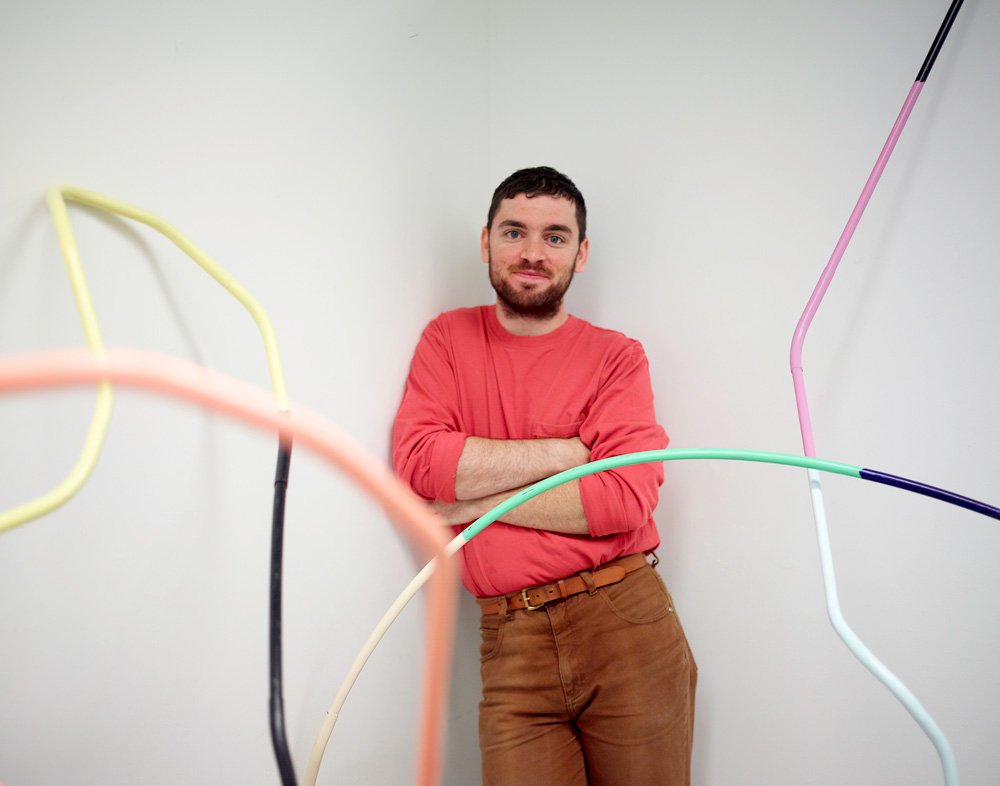
J. Michael Ford
(MFA Painting and Drawing)
For J. Michael Ford, SAIC is a school that opens up a language where you have to shift your point of view. Ford’s current body of work forces the viewer to shift what they might have thought a student of painting and drawing would produce. His present work is a series of bent electrical conduit pipes, similar to those one might see looking up in a room in a building, on wood or cement pedestals.
The materials in Ford’s work form an integral part of our daily lives but often go unnoticed. His work focuses our eyes on the everyday, offering a sense of clarity in the mundane. “I’m elevating everyday materials, as our perceptions change when something is raised an inch above the ground,” he said. The forms of the pedestals and pipes vary, as do the colors, vivid hues that often repeat. The pipes take turns depending on their bases and are reminiscent of the jungle gyms, erector sets and puzzles that define many of our childhoods. Ford is an artist who values humor, play and spontaneity while remaining intentional in his artistic approach. —Ana Sekler
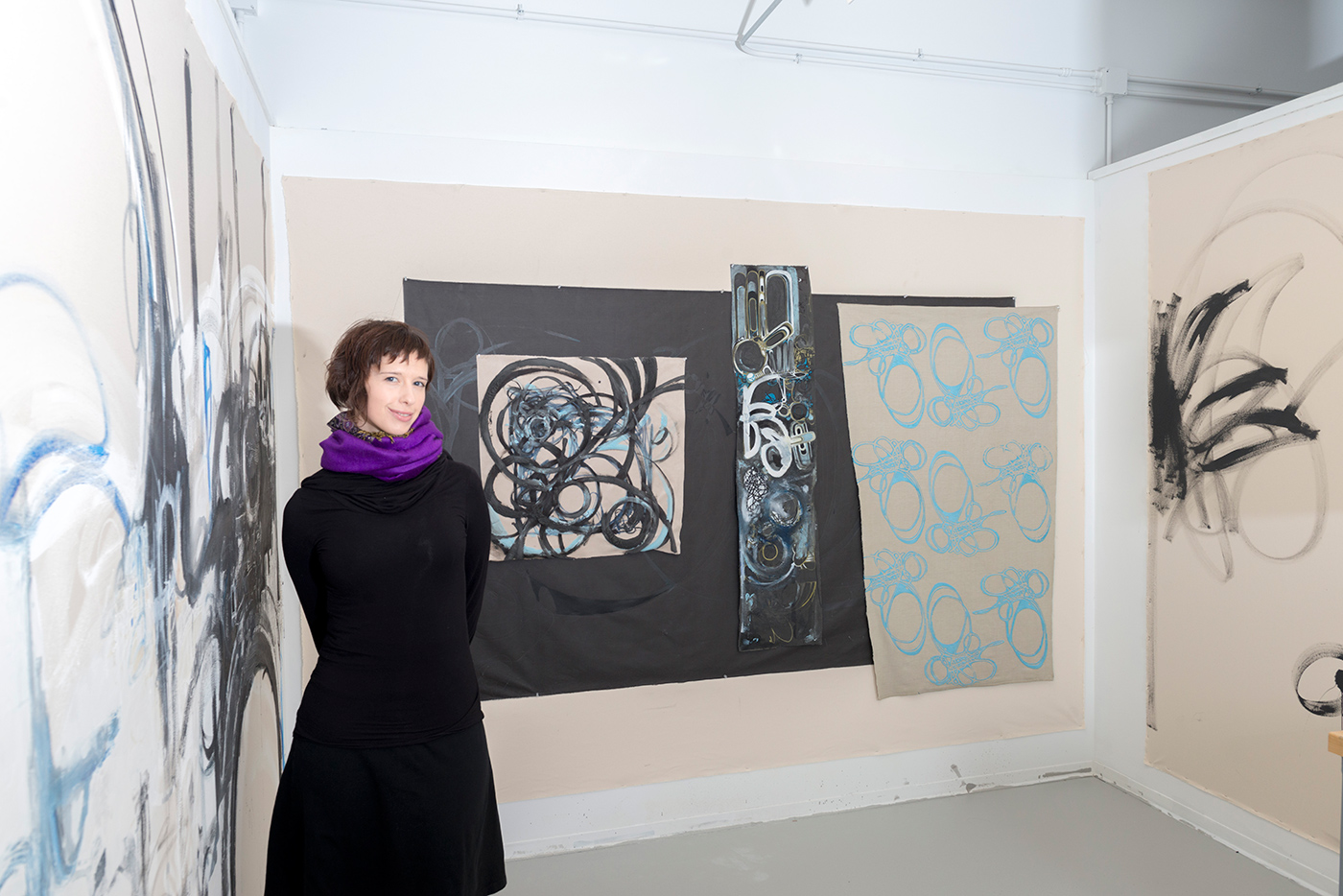
Erika Ray
(MFA Fiber and Material Studies)
Designers at JPC Architects are greeted daily by a stunning three-dimensional art installation in the lobby of this well-known architectural firm in Bellevue, Washington. The magnificent 400-square foot installation, comprised of plaster and pure pigment, depicts a pixelated topographical map of Bellevue. It is the work of current SAIC student, Erika Ray and was described as a “threshold to design” at the Northwest Design Awards Gala. “I layered and carved away with ceramics tools to create very detailed relief … It was approximately 400 hours of work,” she explains.
From that installation to the hand-painted garments she has shown at fashion shows, Ray’s attention to detail has produced beautiful results. “I love my on-campus studio. I lose track of the world there,” she says. Pinned to her studio walls are her current influences. “I am most inspired right now by Franz Kline and Abstract Expressionism and am currently developing a “map” of my interests,” Ray explains. Influenced by the work of Jean-Michel Basquiat, she is adding layers to a large-scale abstract painting, bringing it to life in a palette of black, grays, blues and whites. “I love that [Basquiat] adds and subtracts with layers — it’s an exciting part of my own process.” —Laura Busch
MJ Evans
(Master of Architecture)
The architecture program at SAIC sits on a top floor of the Sullivan Center building, adjacent to State and Monroe and nestled at an intersection of architecture, art, structure, and tradition. It seems a proper setting for MJ Evans’ studio space.
The architecture program requires master’s students to acquire their architects’ license, and the structure allows Evans to take studio classes outside her department, but grad school is not always straightforward. “It took me a while to get a foothold in my department and at the school, and I wish that process would have been easier,” Evans relayed.
Evans cites anarchist rhetoric by Colin Ward and James C. Scott, and politically motivated music, as radical inspirations that fuel her interest in ordinary things like housing consumption and economic influences on zoning patterns.
In her most recent work, Evans gravitates toward sports-themed projects. For a class assignment, she created a recreation/living center overlaid by an “intelligent skin” that would moderate the building’s inside temperatures, act as a trellis for organic materials on the outside and would provide data on the smart skin’s reaction to the elements. Her newly acquired day job at architecture firm ZPD+A has allowed Evans to also aid in the completion of a baseball stadium. —Hannah Larson




